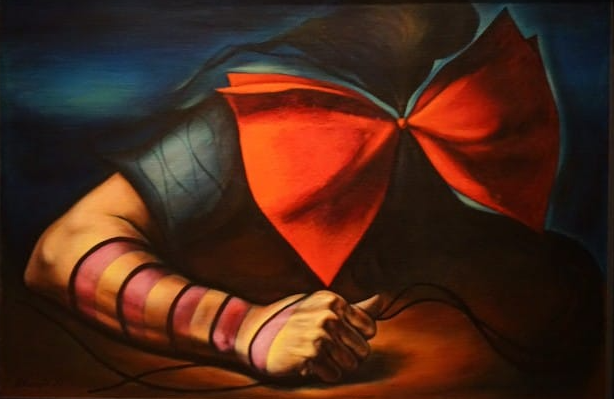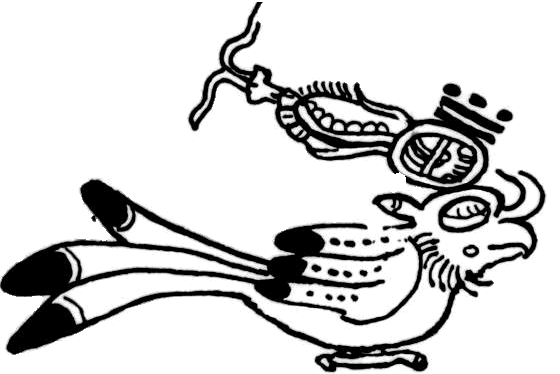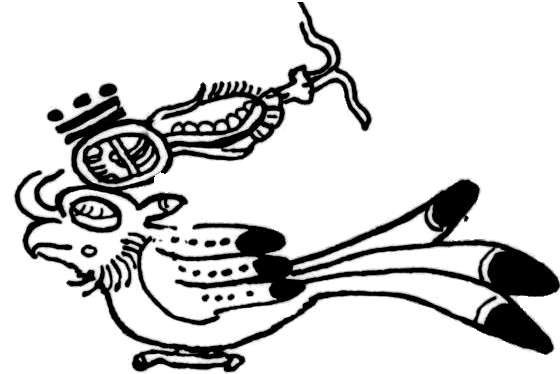
岡本太郎「傷
ましき腕」1936年制作、1949年再制作
岡本太郎(1954)『今日の芸術』ノート
Notas sobre su libro titulado como El Arte Contemporáneo publicado
en 1954 por Taro Okamoto

岡本太郎「傷
ましき腕」1936年制作、1949年再制作
岡本太郎(Tarō
Okamoto,
1911-1996)
章立て
++++++++++++++
1. なぜ、芸術があるのか
2. わからないということ
3. 新しいということは、何か
4. 芸術の価値転換(文庫版 pp.98-)
| 今
日の芸術は, うまくあってはいけない。 (今日の芸術は) きれいであってはならない (今日の芸術は) ここちよく あってはならない |
「そ れが芸術における根本条件である、と確信するからです」(98)※「否定辞を伴う芸術の定義」とここでは名付けておこう。
芸 術はここちよくあってはならない(99)
芸 術はいやったらしい(102)
芸 術は「きれい」であってはならない
芸
術は「うまく」あってはいけない
「以
上、私の言いたいことは、こうです。きれいだから、ここちよいから——
という今日までの絵画の絶対条件がまったくない作品で、しかも見るものを激しく惹きつけ圧
倒しさるとしたら、これこそ芸術のほんとうの凄みであり、おそろしさではないでしょうか。
芸術の力とは、このように無条件なものだということです。これからの芸術は、自覚的に、
そうでなければならないのです」(岡本 1999:114)。
5. 絵はすべて人の創るもの
6. われわれの土台はどうか?
●岡本太郎(ウィキペディアに依拠)Tarō Okamoto,
1911-1996
| 1911 |
神奈川県橘樹郡高津村大字二子で生まれ る。母、岡本かの子、父岡本一平 | Early Life
(1911-1929). Taro Okamoto was the son of cartoonist Ippei Okamoto and
writer Kanoko Okamoto. He was born in Takatsu, in Kawasaki, Kanagawa
Prefecture.In 1927, at the age of sixteen, Okamoto began to take
lessons in oil painting from the artist Wada Eisaku. In 1929, Okamoto
entered the Tokyo School of Fine Arts (today Tokyo University of the
Arts) in the oil painting department.[1] |
| Time in Europe ,
1929-1940 |
一平が朝日新聞の特派員として、ロンドン
海軍軍縮会議の取材に行くことになり、岡本も東京美術学校を休学後、親子三人にかの子の愛人の青年二人を加えた一行で渡欧。一行を乗せた箱根丸は1929
年(昭和4年)神戸港を出港、1月にパリに到着。以後約10年間をここ
で過ごすことになる。「フランス語を勉強するため、パリ郊外のリセ(日本の旧制中学に相当)の寄宿舎で生活。語学の習得の傍ら、1932年頃、パリ大学(ソルボンヌ大学)においてヴィクトール・バッシュ(Victor Basch, 1863-1944)教授に美学を学んでいる。「何のために絵を描くのか」という疑問に対する答えを得るため、1938年頃からマルセル・モースの下で絵とは関係のない民族学を学んだといわれている。
1932年(昭和7年)、両親が先に帰国することになり、パリで見送る。かの子は1939年(昭和14年)に岡本の帰国を待たずに逝去したため、これが今生の別れとなった。
同1939年、芸術への迷いが続いていたある日、たまたま立ち寄ったポール=ローザンベール画廊でパブロ・ピカソの作品《水差しと果物鉢》[5]を見て強い衝撃を受ける。そして「ピカソを超える」ことを目標に絵画制作に打ち込むようになる。岡本は、この時の感動を著書『青春ピカソ』(1953年)において「私は抽象画から絵の道を求めた。……この様式こそ伝統や民族、国境の障壁を突破できる真に世界的な二十世紀の芸術様式だったのだ」と述べている。
1932年、ジャン・アルプらの勧誘を受け、美術団体アブストラクション・クレアシオン協会(Abstraction-Création)のメンバーとなる。
親交のあった戦場カメラマンのロバート・キャパの公私にわたる相方であった報道写真家ゲルタ・ポホリレ(Gerta Pohorylle)に岡本の名前が1936年よりビジネスネーム、ゲルダ・タロー(Gerda Taro)
として引用された。しかしゲルダの活動期間はとても短く1937年にスペイン内戦のブルネテの戦いの取材に向かったが、戦場の混乱で発生した自動車事故で
受けた傷がもとで死去した。
1938年シュールリアリズムの創始者アンドレ・ブルトン制作の「シュール・レアリスム簡易辞典」[6]に「傷ましき腕」が掲載された。日本人では瀧口修
造、瀧口綾子、山中散生、下郷羊雄、大塚耕二らも共に掲載された。」 1935年、太郎とセリグマンはネオコンクレティスム運動を開始 1936年3月クルト・セリグマン展覧会が日本で開催 1939年セリグマンは米国NYに活動の拠点を移す。 |
In 1929, Okamoto
and his family accompanied his father on a trip to Europe to cover the
London Naval Treaty of 1930. While in Europe, Okamoto spent time in the
Netherlands, Belgium, and Paris, where he rented a studio in
Montparnasse and enrolled in a lycée in Choisy-le-Roi. After his
parents returned to Japan in 1932, he stayed on in Paris until 1940.[1]
Much of Okamoto’s formative education occurred during his stay in
Paris. In 1932, he began attending classes at the Sorbonne, and
enrolled in the literature department where he studied philosophy and
specialized in aesthetics. He attended lectures on Hegelian aesthetics
by Victor Basch.[1] In 1938, Okamoto, along with many other Parisian
artists at the time, began studying ethnography under Marcel Mauss, and
he would later apply this ethnographic lens to his analysis Japanese
culture.[1][2][3]
Okamoto also began to establish himself as a painter in Paris, working
with the Parisian avant-garde artists. He was inspired by Pablo
Picasso’s Pitcher and Bowl of Fruit (1931) which he saw at the Paul
Rosenberg Gallery, and in 1932 he began successfully submitting his own
paintings for exhibition at the Salon des surindépendants, for which he
received some positive reviews. From 1933-1936, he was a member of the
group Abstraction-Création, and showed works in their exhibitions.[4]
He participated in the French intellectual discussion group Collège de
Sociologie and joined the secret society founded by Georges Bataille,
Acéphale. His painting Itamashiki ude (“Wounded Arm”) was notably
included in the International Surrealist Exhibition in Paris in
1938.[5]
Okamoto met and befriended many prominent avant-garde art figures in
Paris, including André Breton, Kurt Seligmann, Max Ernst, Pablo
Picasso, Man Ray, Robert Capa and Capa's partner, Gerda Taro, who
adopted Okamoto's first name as her last name.[6] |
| Wartime (1940-1945) |
1940
年、母の死と第二次世界大戦勃発のため帰国。1942年の第28回二科展で二科賞を受賞。1942年、岡本は戦争記録画家として徴兵され、中国に赴く。長
安の捕虜収容所で数ヶ月を過ごした後、1946年に帰国。留守中、空襲により実家と作品すべてを焼失した[7]。 |
Okamoto returned
to Japan in 1940 because his mother had died, and because of the
outbreak of World War II. He found some artistic success in Japan upon
his return, winning the Nika Prize at the 28th Nika Art Exhibition in
1942. The same year, he also had a solo exhibition of works he had
completed in Europe, at the Mitsukoshi department store in Ginza.[7]
In 1942, Okamoto was drafted into the army as an artist tasked with
documenting the war, and left for service in China.[8] He returned to
Japan in 1946 after spending several months in a prisoner-of-war camp
in Chang’an. During his absence, his family home and all of his works
were destroyed in an air raid.[7] |
| Postwar activity
1946-1950 |
戦
後、世田谷区上野毛にアトリエを構える。1947年に二科会会員となり、二科展に出品。1948年、美術評論家の花田清輝とともに、戦後の芸術表現を理論
化しようとするグループ「夜の会」を結成。1949年に解散。その後、花田と岡本は「前衛研究会」を結成し、池田龍雄、山口勝弘、中原佑介ら若手芸術家や
批評家を指導した。やがてこれらのグループは、若手芸術家たちを触発し、独自の前衛グループを結成させた[9]。 |
After the war,
Okamoto established a studio in Kaminoge, Setagaya, Tokyo. He became a
member of the Nika-kai (Nika Association) in 1947 and began regularly
showing works at the Nika Art Exhibition. He also began giving lectures
on European modern art, and started publishing his own commentaries on
modern art.[7] In 1948, he and the art critic Kiyoteru Hanada
established the group Yoru no Kai ("the Night Society"), whose members
attempted to theorize artistic expression after the war. It dissolved
in 1949. Hanada and Okamoto then founded the Abangyarudo Kenkyūkai
("Avant-Garde Research Group") which mentored younger artists and
critics such as Tatsuo Ikeda, Katsuhiro Yamaguchi, and Yūsuke Nakahara.
Eventually these groups inspired younger artists to break off and form
their own avant-garde groups.[9] |
| 1950-1969 |
1950
年代には、日本橋三越や大阪高島屋などで個展が開催されるようになる。1953年には第2回サンパウロ・ビエンナーレの日本代表作品に選ばれ、1954年
には第27回ヴェネツィア・ビエンナーレに日本代表として出品した[10]。1950年代から晩年まで、岡本は官公庁、オフィスビル、地下鉄駅、美術館な
ど、日本のさまざまな公共空間に大型のインスタレーション作品や壁画を制作した。代表的なものに、丹下健三が設計し1956年に竣工した丸の内の旧東京都
庁舎の壁画や、1964年の東京オリンピックのために丹下が設計した国立代々木体育館の壁画5点がある。
[1950年代にかけて、岡本はいくつかの重要な美学理論を確立し、日本社会における公共知識人としての役割を確立した[8]。まず、彼は「極論」(大極
主義)の理論を構築し、1950年の読売アンデパンダン紙のオープニングでその宣言を読み上げた[13]。1952年、岡本は縄文時代の陶磁器に関する影
響力のある論文を発表した。この論文は、先史時代の日本との長い関わりの始まりであり、日本の美学は古代の縄文時代からインスピレーションを得るべきだと
する彼の主張は、日本文化に対する一般の認識を変えるのに貢献した。
[その後、日本文化の本質を研究するために日本各地を旅し、『日本再発見芸術風土記』(1962年)、『新編
日本の謎』(1964年)を出版した。1959年と1966年、岡本は日本一周の一環として沖縄を訪れた。彼はそこで見た、より素朴で伝統的な生活の名残
に衝撃を受けた。1961年、彼は『わすれられた日本』を出版した:
忘れられた日本-沖縄文化論』を出版し、旅の写真を多数掲載した。同書は毎日出版文化賞を受賞した[15]。岡本の写真の多くは、木村伊兵衛や道門研と
いった他の日本人写真家がすでに撮影していた沖縄の題材を再び撮影したものであった[16]。
[1967年、岡本はメキシコを訪れ、大規模な壁画制作の依頼を受け、日本のテレビ番組「新世界」の撮影を行った:
岡本太郎はメキシコ絵画に深いインスピレーションを受け、美術界が西洋諸国から脱却するための道と考えた。そして、日本の縄文文化とメキシコの先コロンビ
ア美術との間に親和性を見出した。メキシコ美術への言及は、その後の彼の作品に現れることになる[19]。 |
Okamoto began
receiving numerous solo exhibitions in the 1950s, including venues at
the Mitsukoshi department store in Nihonbashi, Tokyo, and the
Takashimaya department store in Osaka. His work was included in the
Japanese installation at the 2nd São Paulo Bienal in 1953, and he also
showed works representing Japan at the 27th Venice Biennale in
1954.[10] Okamoto continued to participate in major juried exhibitions
in Japan, including the Nika Art Exhibition, the Yomiuri Independent,
and others.
Beginning in the 1950s and continuing until the end of his career,
Okamoto created large installation artworks and murals for various
public spaces in Japan, including government buildings, office
buildings, subway stations, museums, and other locations. Notable
examples included ceramic murals for the old Tokyo Metropolitan Office
Building in Marunouchi, designed by Kenzō Tange and completed in 1956,
and five ceramic murals for Tange’s Yoyogi National Gymnasium for the
1964 Tokyo Olympics.[11][12]
Over the course of the 1950s, Okamoto solidified several key aesthetic
theories that helped establish his role as a public intellectual in
Japanese society.[8] First, he crafted his theory of “polarism”
(taikyokushugi), the declaration of which he read at the opening of the
Yomiuri Independent in 1950.[13] In 1952, Okamoto published an
influential article on Jōmon period ceramics. This article was the
beginning of a long engagement with prehistoric Japan, and his argument
that Japanese aesthetics should take inspiration from the ancient Jōmon
period helped change the public perception of Japanese culture.[8] He
continued to write on Japanese tradition and became one of the major
thinkers active in the reevaluation of Japanese tradition after World
War II.[14] He later traveled around Japan in order to research the
essence of Japanese culture, and published Nihon Sai-hakken-Geijutsu
Fudoki ("Rediscovery of the Japan-Topography of Art") (1962) and Shinpi
Nihon ("Mysteries in Japan") (1964).
As part of his travels around Japan, in 1959 and 1966, Okamoto visited
Okinawa. He was struck by what he saw as the remnants of a simpler and
more traditional life there. In 1961, he published Wasurerareta Nihon:
Okinawa bunka-ron ("Forgotten Japan: On Okinawa culture"), which
included many photographs from his trip. The book received the Mainichi
Publication Culture Award.[15] Many of Okamoto’s photographs revisited
Okinawa subject matter already photographed by other Japanese
photographers, such as Ihei Kimura and Ken Dōmon.[16] His interest in
Okinawa may be seen as part of a larger modern Japanese interest in
viewing Okinawa as a lingering repository of tradition, in contrast
with the rapidly modernizing Japanese main islands.[17]
In 1967, Okamoto visited Mexico, where he worked on a major mural
commission and filmed a program for Japanese television entitled “The
New World: Okamoto Tarō explores Latin America.”[18] Okamoto was deeply
inspired by Mexican painting and saw it as an avenue to refocus the art
world away from Western countries. He imagined a partnership between
Japanese and Mexican art worlds to launch a new, non-Western modern art
aesthetic, and saw affinities between Japanese Jōmon culture and
pre-Columbian art in Mexico. Allusions to Mexican art would appear in
his subsequent artworks.[19] |
| 1970-1996 |
岡
本は1970年代も旅を続け、執筆活動を行い、パブリック・アートのインスタレーションを制作した。また、版画の制作も始め、シルクスクリーンや銅版画を
試した。このパビリオンには、「太陽の塔」と題された記念碑的な彫刻、塔の内部とその周辺の展示、そして2つの小さな塔が含まれていた。
[20]「太陽の塔」の特徴的な外観は、ヨーロッパのシュルレアリスム、メキシコ美術への関心、そして縄文陶器への岡本の背景から影響を受けている
[21] 。1986年には、パリのポンピドゥー・センターで開催された日本の前衛芸術家による大規模な展覧会『Japon des
Avant-Gardes
1910-1970』に初期の絵画が数点出品された[23]。1991年、岡本の主要作品が川崎市に寄贈され、1996年に岡本が死去した後の1999年
には、岡本を記念する美術館が開館した。 |
Okamoto
continued to travel, write and produce public art installations in the
1970s. He also began to produce prints, experimenting with silkscreen
and copperplate printing.
Okamoto’s most notable achievement of the 1970s was his involvement
with 1970 Japan World Exposition in Osaka (Expo ’70), for which he
designed and produced the central Theme Pavilion, which included a
monumental sculpture entitled Tower of the Sun, an exhibition in and
around the tower, and two smaller towers.[20] The distinct appearance
of Tower of the Sun was influenced by Okamoto’s background in European
Surrealism, interest in Mexican art, and Jōmon ceramics.[21] The
pavilion was visited by over 9 million people during Expo ’70, and is
preserved today in the Expo Commemoration Park.[22]
Toward the end of his career, Okamoto began to receive many more solo
exhibitions of his work. In 1986, several of his early paintings were
included in a major exhibition of Japanese avant-garde artists, Japon
des Avant-Gardes 1910-1970 at the Centre Pompidou in Paris.[23] In
1991, his major works were donated to Kawasaki city, and a museum in
his honor was opened in 1999, following his death in 1996. |
リンク
文献
その他の情報
 Copyleft,
CC, Mitzub'ixi Quq Chi'j, 1996-2099
Copyleft,
CC, Mitzub'ixi Quq Chi'j, 1996-2099
Do not paste, but [re]think this message for all undergraduate students!!!
